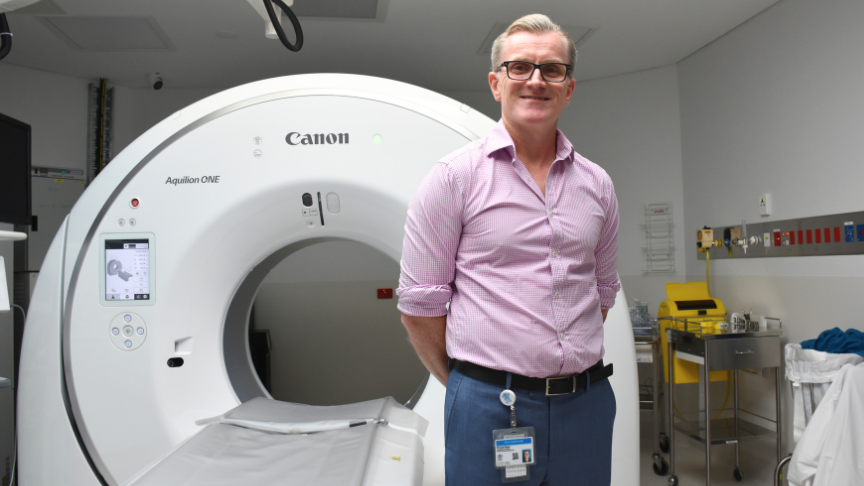
Michael Neep, Assistant Director Medical Imaging at Logan Hospital, with over 25 years in medical imaging, has seen his career evolve from assisting patients to now focusing on supporting staff, all while building lasting connections across various departments.
“I spent a lot of my career helping patients, and now it’s helping staff,” said Michael.
For Michael, no two days are the same.
“There’s lots of variety, which is really good because it keeps the job interesting and challenging.”
“I challenged myself when I first got this job to have personal contact with all 140 staff,” he explains.
“These rounds can sometimes take two or three hours because I chat to them about work issues, but I also catch up on their private lives to build rapport.”
One of the most rewarding parts of his career has been fostering growth within his team. Michael recalls a moment when he helped a shy staff member overcome her fear of public speaking:
“She was terrified of speaking in front of others, but I challenged her to present at a national conference. We stood up together, and she went on to deliver her presentation confidently. Watching her succeed was a very warm feeling for me.”
Michael’s journey began in Brisbane, where he studied at Queensland University of Technology before moving overseas. Upon returning to Australia, Michael aimed to challenge himself with a role that would push his limits, starting at PA Hospital before securing a leadership position in medical imaging at Logan Hospital.
“When I arrived at the PA Hospital, I wanted to design a program to help junior doctors interpret X-rays,” he says.
“The program is still running after 14 years.”
“I noticed that referring doctors were making decisions with little x-ray interpretation support,” he explains.
“They often lacked confidence because their education hadn’t fully prepared them for interpreting X-rays. So, I began designing programs to teach them.”
This led to a new initiative at Logan Hospital, where Michael implemented the ‘radiographer preliminary image evaluation’ system, a process where radiographers provide their preliminary findings immediately to emergency doctors.
“It’s been running for almost 10 years now and is considered the reference site for Australia,”
Michael’s focus on innovation has expanded to leadership development.
“I wanted to educate myself more on leadership skills, so I went on several leadership programs. But I noticed a gap for medical imaging leaders, so I started designing my own program,” he explains.
“Leadership is such a challenging thing to do well, and most leaders in healthcare are clinically trained but not necessarily fantastic leaders. We need to support them.”
The program, which he hopes will expand across Metro South, aims to enhance leadership skills for those in clinical and operational roles.
“The long-term goal is to make this a high-performance leadership program that could extend across allied health, administration, medicine, and nursing,” Michael says.
“It’s about creating a collaborative environment where leaders can bond, learn from one another, and ultimately improve the culture and quality of care.”
As Michael looks to the future, he emphasises that the heart of his career remains improving patient care and staff well-being.
“Whether you’re in clinical roles or leadership, healthcare is about helping people, and that’s what keeps me going. It’s the support and education I can provide to others that drives me every day.”